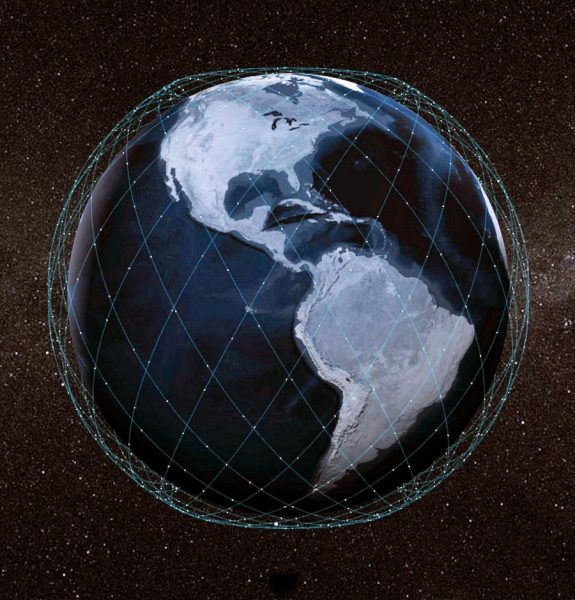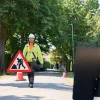Fibre Broadband Association Challenges Starink’s Capacity to Deliver

The Fiber Broadband Association, which represents FTTP networks and suppliers in the USA, has published a new study that claims Elon Musk’s new constellation of Low Earth Orbit (LEO) based Starlink broadband satellites will face a “capacity shortfall” by 2028 and over 56% of their “RDOF subscribers” (rural) may not be fully served.
At present SpaceX has already lofted over 1,000 LEOs into orbit (space) and their initial ambition is to deploy a total of 4,425 by 2024, which could potentially be followed by up to 12,000 at a later date (possibly late 2026). The LEOs sit at a low altitude and can thus deliver fast latency times (c.20-40ms), as well as downloads of around 100Mbps and uploads of 20Mbps (largely proven by the recent beta test), but the catch is that you need lots of them to deliver good performance and coverage (expensive).
The Starlink service, which has generally had a fairly successful beta, is now in the process of opening itself up to taking early pre-orders in the UK (and other countries) ahead of their initial commercial launch later this year (expect to pay a refundable $99 deposit). At this stage their website still doesn’t state what the final package(s) will look like, but hopefully those details should follow soon (the beta cost £89 [$99] per month, plus £54 for shipping and £439 [$499] for the kit).
Advertisement
Despite this not everybody is happy with the new constellation, particularly those who would rather see such investment being put toward better fixed line solutions on the ground. In keeping with that the FBA and NTCA (Rural Broadband Association) have submitted to the FCC a technical assessment and model to “aid the agency’s efforts to scrutinize the RDOF long-form applications for LEO Satellite broadband networks.”
The FCC awarded almost $900m (c.£650m) of assigned RDOF funds to SpaceX™ with a commitment to connect 640,000 locations across the U.S. with its Starlink™ satellite broadband technology at the 100Mbps/20Mbps broadband performance tier.
The sample analysis conducted by Cartesian, based upon current publicly available information, estimates that Starlink would “face a capacity shortfall by 2028 and over 56% of Starlink’s RDOF subscribers would not be fully served.” The FBA/NTCA are esentially saying that over 56% of subscribers would experience service degradation during peak (busy) periods, which will worsen and “significantly impact all its awarded RDOF locations” if Starlink’s broadband capacity is also offered to (non-RDOF) commercial subscribers.
Gary Bolton, President and CEO at the FBA, said:
“The Fiber Broadband Association continues to work toward a better broadband future for everyone. We’re collaborating with organizations across the globe to advance broadband initiatives, like RDOF, to boost opportunities for work, education and economic development. We applaud the FCC’s efforts to provide broadband subsidies as we work to eliminate the rural and urban digital divide.
Our goal with our latest FCC filing is to provide tools and technical analysis that will support more indicative assessments of incipient technologies so that the agency can ensure that RDOF winners can deliver the broadband performance promised.”
Sadly, the FBA and NTCA did not make the details of their model and analysis available as part of their announcement, which makes it very difficult for us to assess how they’ve reached their conclusions and what severity of impact upon performance they actually anticipate.
Advertisement
Network contention is a reality for pretty much all consumer facing broadband networks (fixed line or otherwise), which means that limited capacity usually has to be shared between many users in order to find the right balance between an affordable product (£89 per month is very expensive for most people, which may at least keep early demand under control) and an economically viable operating model. But the more you share out that capacity to lower the cost, the greater the risk of network congestion (slower speeds, particularly at peak times).
Financial analyst firm Cowen attempted to analyse this last year, but their contention model was overly-simplistic and we’d expect higher contention than they predicted (here). Under Cowen’s prediction, which assumed the unrealistic position of 100% efficiency (and a top capability of 20Gbps per satellite), a full constellation of 12,000 LEOs could deliver 100Mbps to 485,000 simultaneous users (or 1.5 million using a 3 x over-subscription model). However, it’s hard to judge any of this until we know how much contention SpaceX will apply, but equally there are some very real limits at play.
In short, the FBA/NTCA study, regardless of their clear vested interests, does raise an important point for consideration, albeit one that we can’t effectively judge until we know more about the model in their analysis and how Starlink’s commercial packages will actually be positioned (prices, speeds etc.). Until then it’s somewhat of a guessing game. Lest we forget that Starlink has already talked about developing a 10Gbps (per user) capable service in the future (here).
We should add that the same consideration will be a factor for the rival OneWeb constellation too, in fact it’s a much bigger issue for OneWeb given that they will have a significantly smaller network.
Advertisement
Mark is a professional technology writer, IT consultant and computer engineer from Dorset (England), he also founded ISPreview in 1999 and enjoys analysing the latest telecoms and broadband developments. Find me on X (Twitter), Mastodon, Facebook, BlueSky, Threads.net and Linkedin.
« iD Mobile UK Signs New Agreement to Launch 5G Mobile Plans
BT Launch Alexa-enabled Home Phone for UK Broadband Users »























































And FBA’s much better solution for remote rural broadband is…?
A study which claims Starlink broadband satellites will soon face a “capacity shortfall” is implicitly admitting that (a) Starlink will be hugely successful; and (b) there will be insufficient ground-based capacity to meet the demand that Starlink fulfils, over the same time frame. (If there were, people would choose the cheaper and better ground-based service)
This completely validates Starlink’s value proposition and business model.
In the long term, ground-based links will probably catch up in most areas, but there’s a large gap to plug for the next 10-20 years at least.
As for capacity shortfall: they seem to underestimate Musk’s ability to chuck things into space. If he needs 100,000 satellites to meet demand, he’ll do it.
Absolutely. If the cabled carriers had invested in covering more areas and provided enough backhaul rather than skimming the cream off the top with dividend payouts they wouldn’t be in the situation where Musk could even suggest something like his venture.
Its always the same, do the bare minimum, sift off the profits, invest little, repeat, re-rinse,continue……
Sour grapes then…….. we seem to be seeing a lot of this lately. I do wonder if it’s become the norm since the days of their ex-president.
Is it any surprise that an incumbent is speaking negatively about new technology??? Meouw…hiss
The satellites are cheap to manufacture and are launched at cost, a cost which will drop dramatically with the completion of the Starship / Super Heavy programme.
Once the Starlink constellations are complete, SpaceX will no-doubt be launching thousands of new satellites a year, deorbiting the older ones.
By 2028 the capacity of Starlink satellites will certainly be significantly greater than those of today.
“capacity shortfall” by 2028
That is assuming that Starlink are still lofting the same satellites they are putting up in 2021. Yes the are technical limitations, but 7 years is an age in software and hardware time.
Regardless of Musk being an arse sometimes, it isn’t one to let his companies rest on their laurels.
Of course it could have gone bust by then, but it is a company which isn’t listed, and some deep pocketed investors.
Like investing $1.5B in bitcoin? LOL
Well, they are more than welcome to go and, you know, COMPETE?
Mind, that would cost a lot more money than lobbying the FCC, of course.
Honestly, quoting Baby Herman: “this whole thing stinks worse than yesterday’s diapers”.
Lets hope their build quality of their satellites is better than their cars, with doors that don’t align properly, dodgy panels and paint that isn’t dried before it leaves the shop. Oh and the price of the beta ? hahahahahaha.
Do you have a Tesla?
The 1.5$ billion was Tesla money. Separate company, separate liability. Personally not how I would invest 1.5$ billion, but then again I can’t afford to lose 1.5$ billion 🙂
The 1.5$ billion was Tesla money. Separate company, separate liability. Personally not how I would invest 1.5$ billion, but then again I can’t afford to lose 1.5$ billion 🙂
Greedy fat cats complaining about true competition.
Fully behind Starlink. I’m on the beta programme.
Sick and tired of second rate services from the likes of BT, Virgin, Sky, Talk Talk, Vodaphone, O2.
I live in Devon. We do have superfast broadband in major cities but go 3 miles out and both broadband and mobile are shockingly bad.
I’ve been with both BT and Virgin. The service broadband speed is good. The BT smart hub is good. The Virgin Hub 3 is so bad I have a second router and use the modem mode.
I just want a good reliable service, high speeds and good customer service at a good price instead of paying more to get the same or even less.
None of the above mentioned companies can provide that. I just hope Starlink can.
I’ll give it a go and see what happens. Can’t be any worse than current providers.
As soon as Starlink goes public I’m buying shares in that company. Welcome to paradise. Just look at Tesla’s share price. Rocketed (pun).
Good luck to Musk and Starlink.